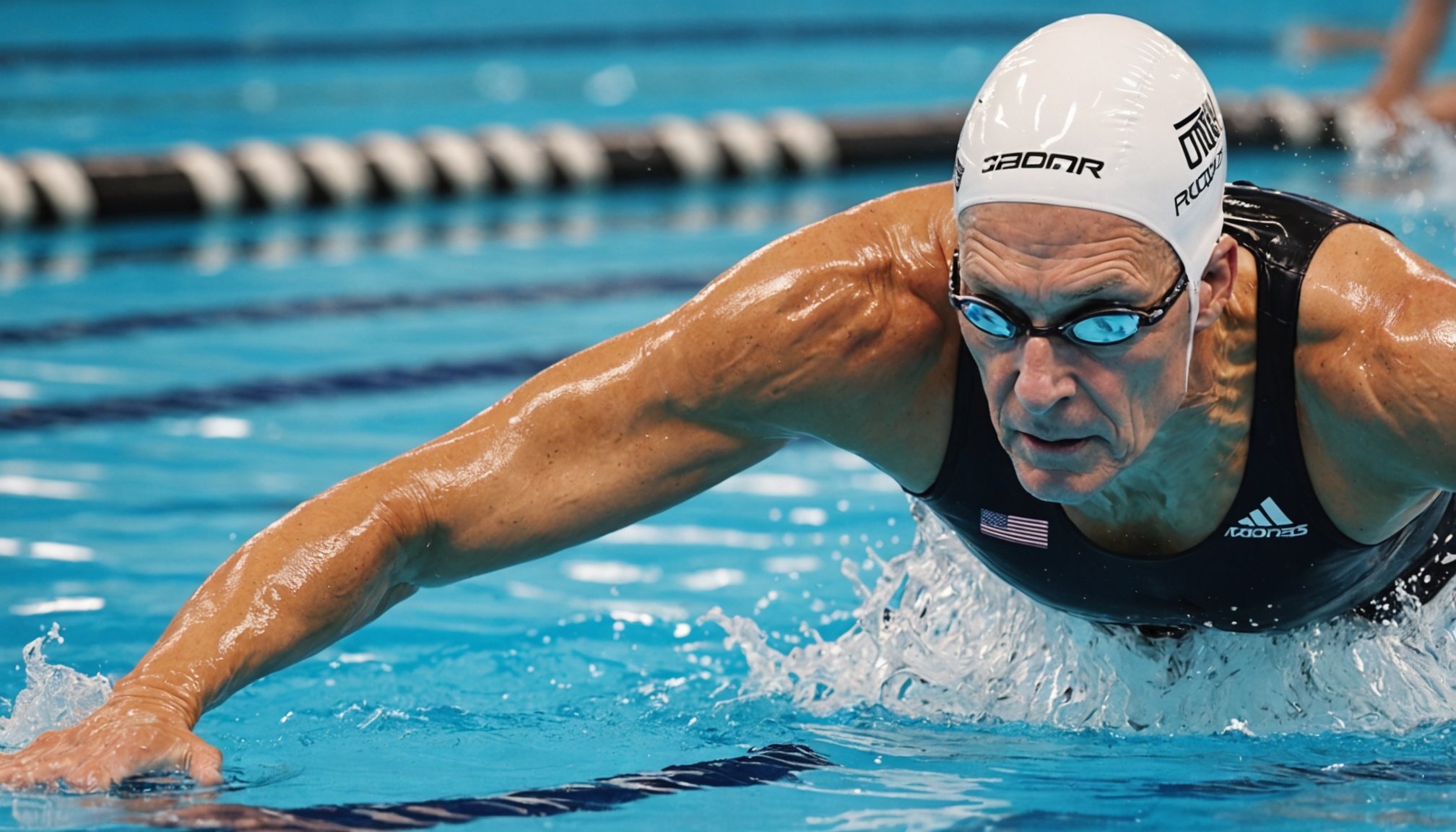Understanding Adaptive Training Programs
Adaptive training programs are tailored to meet the evolving needs of aging swimmers. As athletes age, their bodies require adjustments to maintain peak performance and protect against injuries. These programs are crucial in the world of competitive swimming as they ensure that senior swimmers continue to compete safely and effectively.
One of the primary components of adaptive training involves personalised workout regimens that consider an individual’s physical capabilities and limitations. This personalized approach helps in enhancing performance by focusing on strength, flexibility, and endurance—all key elements for maintaining competitiveness. Moreover, adaptive programs often incorporate specific rest periods to allow for recovery, which is essential for an aging body.
Also read : How VR-Enhanced Training Transforms Decision-Making Skills in Cricket Bowlers
Safety is another critical element of these programs. By tailoring exercises and intensities, adaptive training minimizes the risk of injuries, which are more prevalent among older swimmers. Designed to accommodate varying levels of mobility and stamina, these programs make competitive swimming a sustainable sport for seniors.
In summary, adaptive training not only supports the physical needs of aging swimmers but also empowers them to continue enjoying the sport they love. Embracing these specialized programs can lead to improved performance and greater longevity in competitive swimming.
Additional reading : Unlocking the Future: How Artificial Intelligence Enhances Predictions of Sports Injuries
Key Techniques for Aging Swimmers
Adapting swim techniques is crucial for aging swimmers seeking to maintain efficiency and prevent injury. Technique adaptations often involve refining strokes to reduce strain. This may include adjusting the stroke length and relying more on core muscles to maintain balance and propulsion. By focusing on efficient movements, older athletes can sustain energy and minimise the risk of overuse injuries.
Technique Adaptations
One way to modify swim techniques effectively is by concentrating on streamlining your form. This not only improves speed but also reduces drag, making each stroke count more. Techniques such as bilateral breathing and maintaining a consistent kick can aid in equalising muscle use, thereby reducing the likelihood of muscular imbalances.
Strength Training for Aging Swimmers
Strength training is vital for improving stamina and maintaining muscle mass. Engaging in core strengthening and resistance exercises can fortify muscles that support key swimming motions. This includes exercises focusing on the shoulders, back, and legs. Regular strength workouts can help enhance swim power and protect joints.
Recovery Strategies
As the body ages, recovery becomes a top priority. Implementing effective recovery strategies such as stretching routines, yoga, and aquatic therapy can be beneficial. Techniques like hydromassage and using foam rollers help ensure muscles recover adequately, thus preventing injuries and preserving long-term fitness. Proper hydration and nutrition also support effective recovery processes, boosting overall performance.
Success Stories in Competitive Swimming
In the realm of swimming competition, aging athletes face unique challenges. However, many have achieved remarkable success through adaptive training. This approach tailors training methods to meet each athlete’s individual needs, factoring in age and physical changes.
One inspiring case study involves a group of aging swimmers who have not only maintained but improved their performance. These athletes attribute their success to adaptive training, which emphasises customised routines and targeted exercises. This approach has been pivotal in enhancing their stamina and strength, crucial factors in swimming performance.
Testimonials from both swimmers and coaches highlight the transformative impact of adaptive training. Many affirm that these programmes have revitalised their competitive spirit and led to significant improvements. Coaches often emphasise how such training fosters a better understanding of each athlete’s limits and potential, illustrating its multifaceted benefits.
Analyzing these results, it becomes evident that adaptive training considerably impacts performance. It supports aging athletes in extending their competitive careers and achieving new personal bests. As swimming competitions evolve, adaptive training continues to prove its effectiveness, cementing its role in the continued success of aging athletes.
Practical Tips for Incorporating Adaptive Training
Embarking on the journey of crafting effective training regimens for swimmers—especially as they age—can be challenging yet rewarding. Tailoring a plan that evolves with the swimmer’s capabilities and goals is imperative.
Designing a Customized Training Program
To successfully integrate adaptive strategies, it’s crucial to first understand individual swimming techniques. Evaluate strengths and areas for improvement. This approach aids in setting realistic milestones, keeping motivation high. A bespoke training regimen not only accommodates physical changes over time but also maximizes potential through targeted exercises. Flexibility in these adaptive strategies allows for periodic adjustments, ensuring that goals remain achievable and aligned with evolving swimmer needs.
Collaborating with Coaches
Collaboration with knowledgeable coaches brings a myriad of benefits. Coaches serve as a key resource in honing swimming techniques and refining adaptive strategies. Their expertise provides critical insights, helping to adjust training regimens in response to performance metrics and feedback. This synergy between swimmer and coach enhances the effectiveness and personalisation of the development plan.
Utilizing Technology and Resources
Leveraging digital tools can revolutionize training experiences. Apps and monitoring devices offer valuable data on swimming performance, assisting in the refinement of training regimens. They track progress, facilitate communication with coaches, and adapt personalized swimming techniques to the true capabilities—ensuring that adaptive strategies remain progressive and effective.
Expert Insights and Research Findings
Recent research studies highlight the benefits of adaptive training for older swimmers, showing promising results in enhancing performance. Studies demonstrate that adaptive approaches can significantly improve cardiovascular endurance and muscle strength, helping swimmers maintain or even enhance their competitive edge as they age.
Sports scientists and physiologists agree that adaptive training is essential. Experts suggest incorporating varied intensities and exercises tailored to the individual’s current fitness level. Such expert opinions emphasize the importance of maintaining flexibility in training regimens to cater to specific needs.
Research highlights several swimming adaptations that can aid older athletes. For instance, incorporating resistance workouts alongside swimming sessions can optimize muscle strength and reduce the risk of injury. Adaptive programs also encourage more frequent rest and recovery periods, crucial for an aging body to heal and build resilience.
In terms of recommendations, scientists advise athletes to focus on technique improvement and efficiency in the water, which can compensate for any decrease in physical power. This approach not only enhances performance but also provides longevity in the sport. By following these evidence-based strategies, aging athletes can continue to thrive in their swimming careers.











